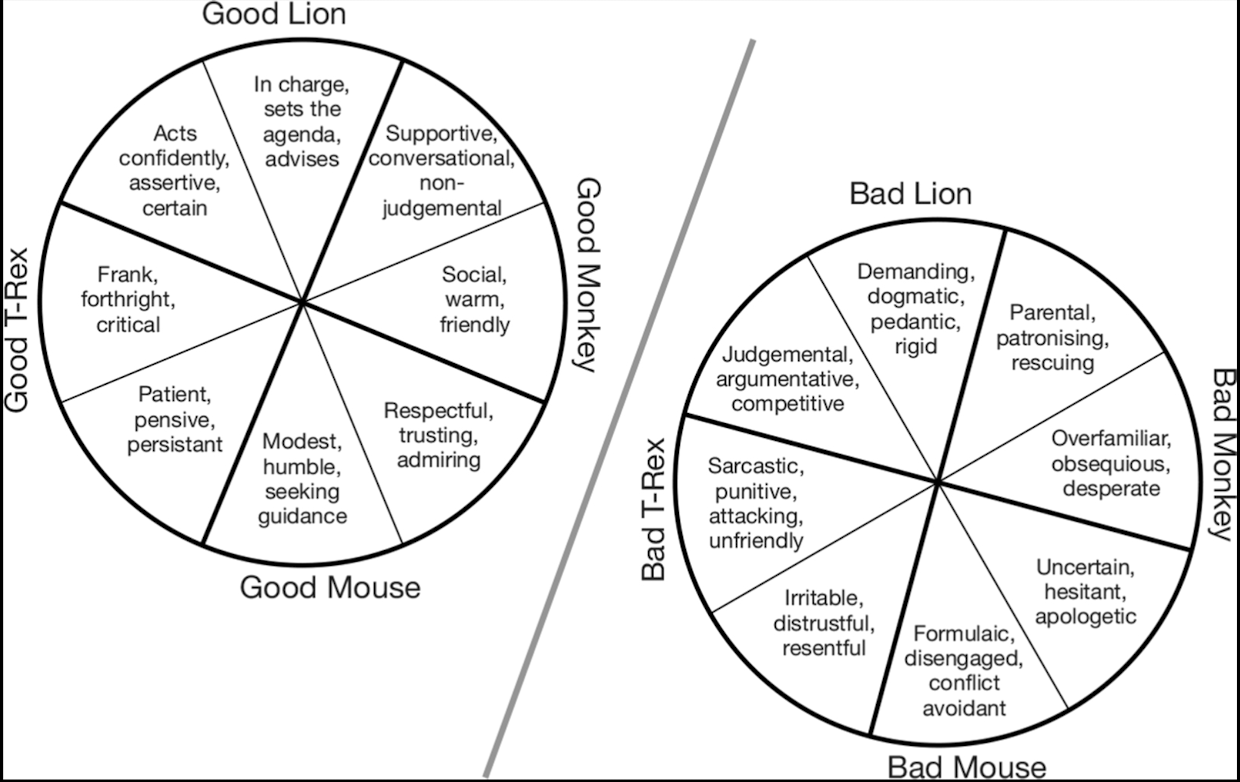- Author: Emily Alison, Laurence Alison
- Publisher: Ebury Digital
- Rating: ⭐⭐⭐
- Link Amazon : Book Rapport
- Pages: 362
- Time to Read: 28 Days
🚀 The Book in 3 Sentences
- Rapport is when two people “get” each other.
- Rapport help create a real honest connection.
- Two use rapport, use the HEAR principle and the animal circle.
🕵🏼Who Should Read It?
The book aims at a very broad spectrum of people because every person communicates in their daily life. The techniques and models presented in the book address the problems and solutions for everyday communication. The book will help understand relationship dynamics better and also generally improve your relationships. Because of the authors simple writing style the book is an easy read. During the book there are a lot of example conversations where the techniques learned from this book are used.
☘️ How the Book Changed Me
The content of the book is simple and easy understandable but not groundbreaking. This is why I did not learn a lot of new knowledge. What I never heard of though is that you can split the people in 4 communication types.
✍️ My Top Quotes
“Do not use a hatchet to remove a fly from your friend’s forehead.” Alison Emily, Alison Laurence
“The real key to communication lies in what you do before you even open your mouth.” Alison Emily, Alison Laurence
📒 Summary + Notes
The book Rapport teaches a simple model for understanding conversations and interactions. The two authors of this book have a lot of experience with interrogations and their experience as well as multiple studies have shown that building an innate connection with the person you are talking to is the better option than trying to get what you want with force or manipulation.
The cornerstones of rapport
Rapport as described before is the practice to create real meaningful relationships. In other words rapport is when two people ‘get’ each other. Rapport should be based on four cornerstones as suggested in the book:
- Honesty:Be objective and direct when communicating your intentions or feelings.
- Empathy:Understand someone based on recognition of their core beliefs and values.
- Autonomy:Emphasise other people’s free will and right to choose whether to cooperate.
- Reflection:Identify and repeat back those elements that are significant, meaningful and tactical to help guide a conversation towards the goal.
These cornerstones can be grouped in what the book calls the HEAR principle. These cornerstones where found to be the core tenets of how to maintain engagement with other people in a positive and productive way, regardless of how adversarial or awkward the situation.
Rapport: what is it good for?
As mentioned before, the two authors of this book, Emily Alison and Laurence Alison, both come from a background of interrogation mostly criminal investigations. Most of us don’t interrogate criminals as a hobby or even once in our life. The thing is rapport should not only be used when wanting to get information, like in an interrogation, but in every communication during the day. With rapport you will let you leave conversations with your confidence, integrity and moral compass intact. Instead of letting a shouting battle destroy your day you will let it go. Also Rapport will make people perceive you as a better listener and as a nice person to talk to.
The animal circle
The HEAR Principle will serve you well in improving your communication and connection across all relationships but it is important to acknowledge that not every communication. This is due to the fact that people are different. Some are natural leaders, some thrive on conflict while others prefer to stay in the background. This is where the animal circle provided by the book comes into play.

The good and bad animal circle
During every interaction a person can be categories in one of four animals, Lion, Monkey, T-Rex and Mouse. Every Animal has its own characteristics:
- Lion: The Lion like to be in charge, advised and sets the agenda
- Monkey: The monkey is very friendly, likes cooperation and working in as a team
- Mouse: The mouse is humble, seeks guidance and likes to capitulate
- T-Rex: The T-Rex is forthright, critical, frank and likes conflict.
The quick shorthand for using the model to diagnose an interaction is to ask two simple questions: Does this person want me to be psychologically higher (Lion) or lower (Mouse) than them in this situation? Does this person want a psychological scrap with me (T-Rex) or a hug (Monkey)?
It is important to note that no animal is bad or not as good as another. Every animal and with that every characteristic has its place in the world otherwise the world would be boring and blunt. Also every animal has a bad counterpart which can be found on the bad circle. The goal is now to find out in every interaction in wich animal your counterpart is. If you think your counterpart is acting on the bad cycle, then you should try to counter them with acting on the good circle.
In the book there are multiple questions to answer the question of wich animal you are the best in and which you are not as good in. After the assessment you will have a spider chart of your good and bad animal circle. The ultimate goal is to communicate more and better in the good circle and less in the bad circle.
Now equipped with this new communication model I hope you enjoyed reading this blog and recommend checking out the book if you want to learn more about the animal circle, rapport and how to use it in everyday life. I look forward to seeing you reading my next blog post and wish you all the best.
Regards Devin Hasler

